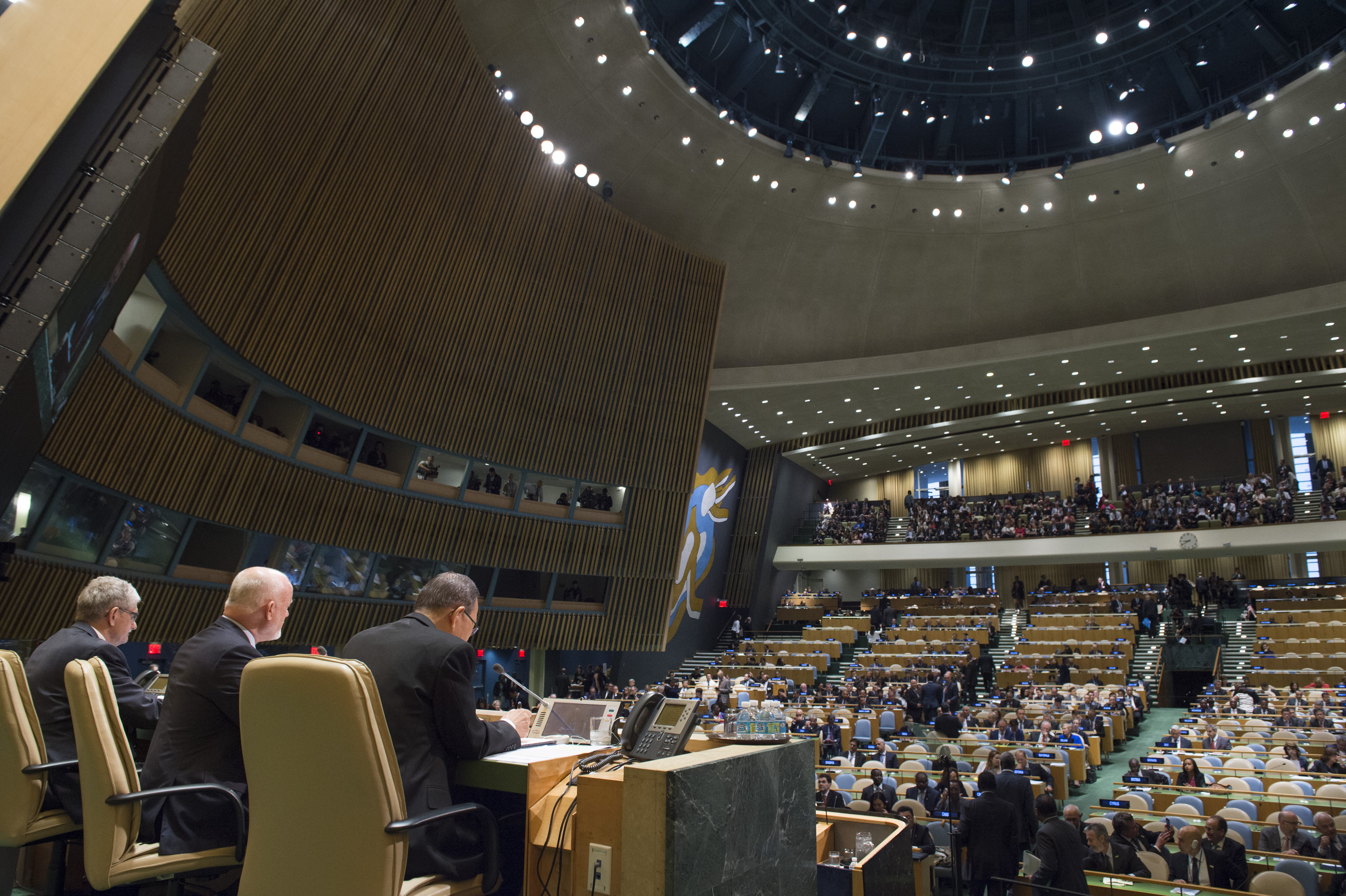As part of the 71st UN General Assembly, Mary Robinson participated in an interactive multi stakeholder round table : ‘Addressing the drivers of migration, particularly large movements and highlighting the positive contributions of migrants’.
It was the UN General Assembly’s first-ever Summit for Refugees and Migrants dedicated to addressing the issue of large movements on a global scale. More people have been forced to flee their homes than at any time since World War II. At the opening of the Summit, world leaders adopted the New York Declaration which expresses political will to protect the rights of refugees and migrants, to save lives and share responsibility.
During her intervention at the round table session, Mrs Robinson said that looking at the drivers of migration “I see human solutions to human problems that can be engaged to help reduce the pressures on people to move”. She added that “securing the right to development and undertaking this in a sustainable and equitable way, we can reduce the need for people to move to economically better their lives”.
Mrs Robinson said the impacts of climate change are “inevitable” and that “we must undertake processes to cope”. However, she added that prevention is still possible in many cases. “Reaching that 1.5C degree target will go a long way to reducing the impact climate change will have on the planet and on vulnerable people.”
This was echoed by other representatives at both the plenary and the round table discussions. Peter Thomson, Fiji’s Ambassador to the UN and president of the 71st session of the UN General Assembly identified climate change as a root cause of displacement in his remarks. “Some [people] are uprooting their lives in response to the adverse impacts of climate change,” he said.
In his remarks, William Lacy Swing, the Director General of the International Organisation for Migration said that environmental degradation is driving migration and “climate change threatens a further 75 million living just one meter above sea level”.
“Efforts to reduce disaster risk will be overwhelmed by climate change if we move beyond the threshold of keeping warming below 2 degrees as agreed in Paris,” said Robert Glasser, Special Representative of the Secretary General for Disaster Risk Reduction during the round table discussion. Climate change mitigation, reducing GHG emissions “is the fundamental risk treatment,” he added.
Processes such as the Global Compact for Safe, Regular and Orderly Migration must include “the voices of the vulnerable such as those who have migrated due to climate-related factors,” Mrs Robinson said. “This is a central tenant of climate justice,” Mrs Robinson adds.
Migration that is a response to climate change related impacts “is a question of justice”. “The vast majority of the people who will move will be from populations that are least responsible for the underlying causes of climate change,” said Mrs Robinson.
Related Links
Protecting the Rights of Climate Displaced People – A Position Paper


